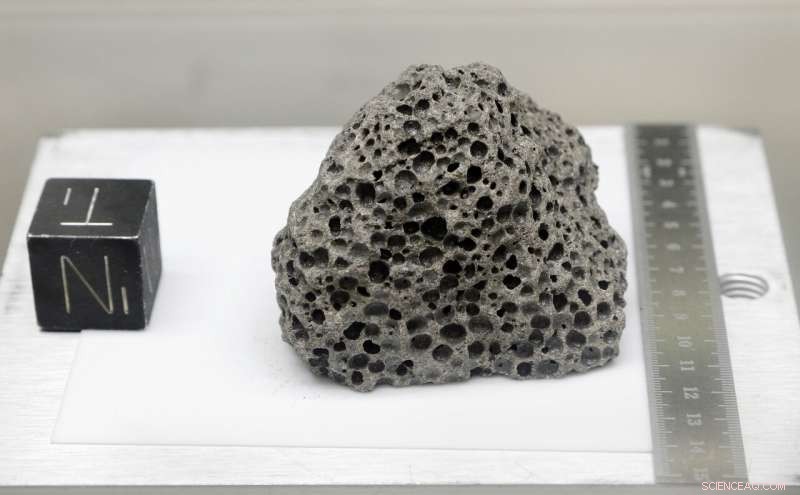
Samlade under Apollo 15, en 3,5 miljarder år gammal basaltsten som liknar stenar som bildas runt Hawaii, visas i ett trycksatt kvävefyllt undersökningsfall inne i månlabbet vid NASA Johnson Space Center på måndag, 17 juni, 2019, i Houston. För första gången på decennier, NASA är på väg att öppna några av de orörda proverna och låta geologer ta en knäck på dem med 2000-talets teknologi. (AP Photo/Michael Wyke)
Inuti ett låst valv på Johnson Space Center finns en skatt som få har sett och färre har rört.
Det begränsade labbet är hem för hundratals pund av månstenar som samlades in av Apollo-astronauter för nästan ett halvt sekel sedan. Och för första gången på decennier, NASA är på väg att öppna några av de orörda proverna och låta geologer ta en knäck på dem med 2000-talets teknologi.
Finns det något bättre sätt att markera sommarens 50-årsjubileum av mänsklighetens första fotspår på månen än att dela lite av månbytet.
"Det är en sorts en slump att vi öppnar dem under jubileumsåret, " förklarade NASA:s Apollo-provkurator Ryan Zeigler, täckt topp till tå i vit skyddsdräkt med matchande tygstövlar, handskar och mössa.
"Men jubileet ökade verkligen medvetenheten och det faktum att vi ska tillbaka till månen."
När guldårsdagen för Neil Armstrong och Buzz Aldrins bedrift närmar sig med stormsteg – landade deras månmodul Eagle den 20 juli, 1969, på Stillhetens hav — månen är glödhet igen.
Efter decennier av flip-flopping mellan månen och Mars som nästa stora astronautdestination, NASA siktar på att sätta astronauter på månens yta igen 2024 i Vita husets riktning. President Donald Trump föredrar att prata upp Mars. Men konsensus är att månen är en avgörande provningsplats med tanke på dess relativa närhet till hemmet—240, 000 miles (386, 000 kilometer) eller två till tre dagar bort.
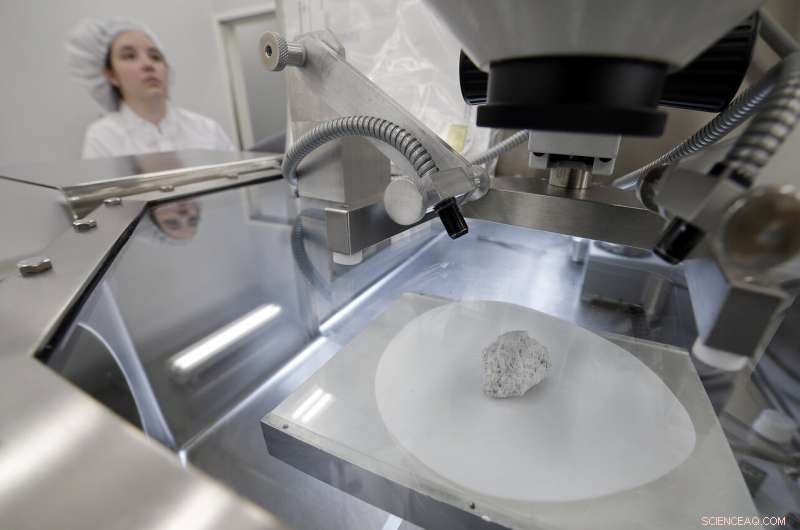
Genesis Rock, förgrund, en 4,4 miljarder år gammal anortositsten, ca 2 tum lång, togs tillbaka av Apollo 15 och användes för att bestämma att månen bildades av ett gigantiskt slag, sitter under glas inuti en trycksatt kvävefylld undersökningslåda som Lacey Costello, en Apollo provkureringsprocessor, arbetar med andra prover på utsidan av höljet inne i månlabbet vid NASA Johnson Space Center måndag, 17 juni, 2019, i Houston. (AP Photo/Michael Wyke)
Zeiglers jobb är att bevara vad de 12 moonwalkers tog med sig från 1969 till 1972 - månprover på totalt 842 pund (382 kg) - och se till att forskare får de bästa möjliga proverna för studier.
En del av jorden och bitar av sten var vakuumförpackade på månen – och exponerades aldrig för jordens atmosfär – eller frystes eller lagrades i gasformigt helium efter stänk och lämnades sedan orörda. Laboratoriets personal försöker nu ta reda på hur man bäst tar bort proverna från sina rör och andra behållare utan att förorena eller förstöra något. De övar med mock-up utrustning och låtsas som månens smuts.
Jämfört med Apollo-erans teknik, dagens vetenskapsinstrument är mycket känsligare, Zeigler noterade.
"Vi kan göra mer med ett milligram än vad vi kunde göra med ett gram då. Så det var riktigt bra planering från deras sida att vänta, " han sa.
Månprovlabbet har två valv sida vid sida:ett för stenar som fortfarande är i rakt från månen och ett mindre valv för prover som tidigare lånats ut för studier. Cirka 70 procent av det ursprungliga draget är i det orörda provvalvet, som har två kombinationer och det tar två personer att låsa upp. Cirka 15 procent finns i förvar på White Sands i New Mexico. Resten används för forskning eller visning.
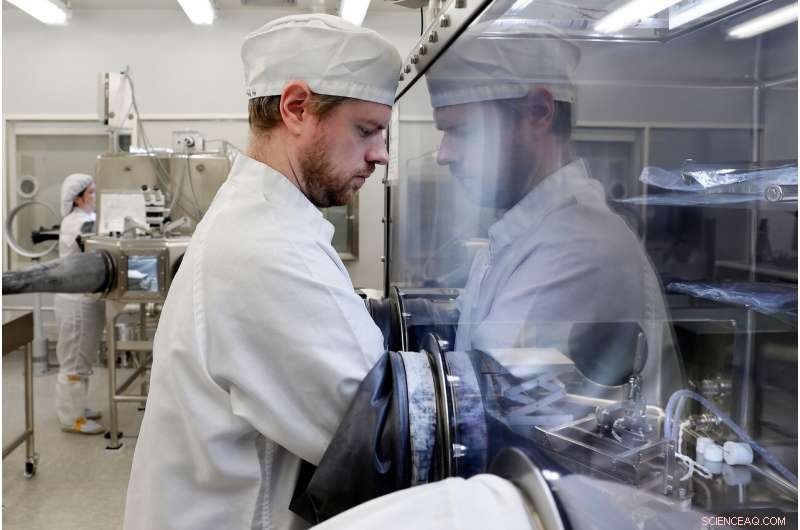
Jeremy Kent, Apollo curation processor, arbetar med månprover i en förseglad, kvävetrycksatt undersökningsfall inne i månlabbet vid NASA Johnson Space Center måndag, 17 juni, 2019, i Houston. Proverna hålls alltid inne i en kvävemiljö för att förhindra sönderfall och nedbrytning, även när de flyttas mellan labbet och förvaringsvalvet. (AP Photo/Michael Wyke)
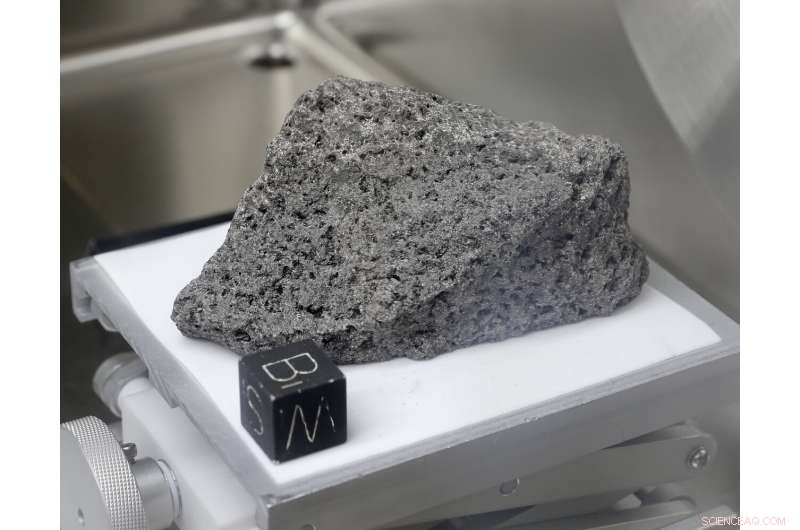
Samlade under Apollo 17, en 3,5 miljarder år gammal basaltsten känd som "The Children of the World" eller "The Goodwill Sample" visas i månlabbet på NASA Johnson Space Center på måndag, 17 juni, 2019, i Houston. Det användes för att göra prover som gavs till alla länder på jorden. (AP Photo/Michael Wyke)

Collected during Apollo 16, an anorthosite sample believed to be the oldest rock collected during the moon missions is displayed in the lunar lab at the NASA Johnson Space Center Monday, June 17, 2019, in Houston. Scientists also believe it to be from the original crust of the moon just after it cooled. (AP Photo/Michael Wyke)
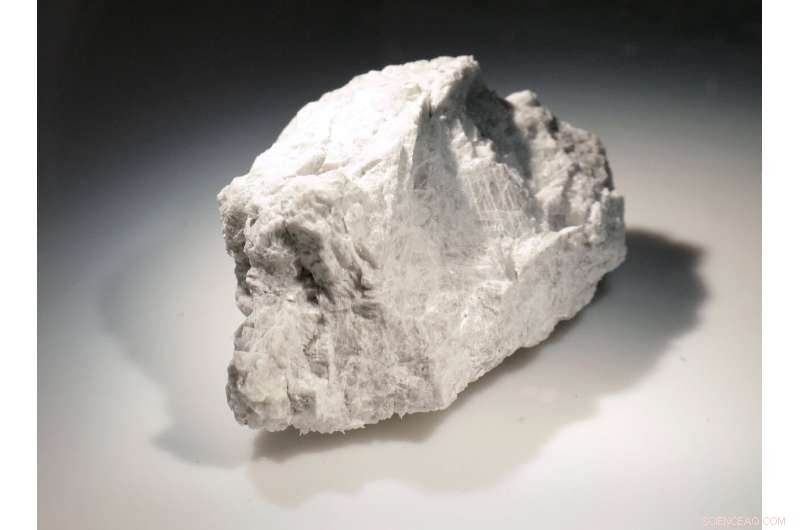
The "Genesis Rock, " a 4.4 billion-year-old anorthosite sample approximately 2 inches in length, brought back by Apollo 15 and used to determine the moon was formed by a giant impact, is lit inside a pressurized nitrogen-filled examination case in the lunar lab at the NASA Johnson Space Center Monday, June 17, 2019, in Houston. (AP Photo/Michael Wyke)
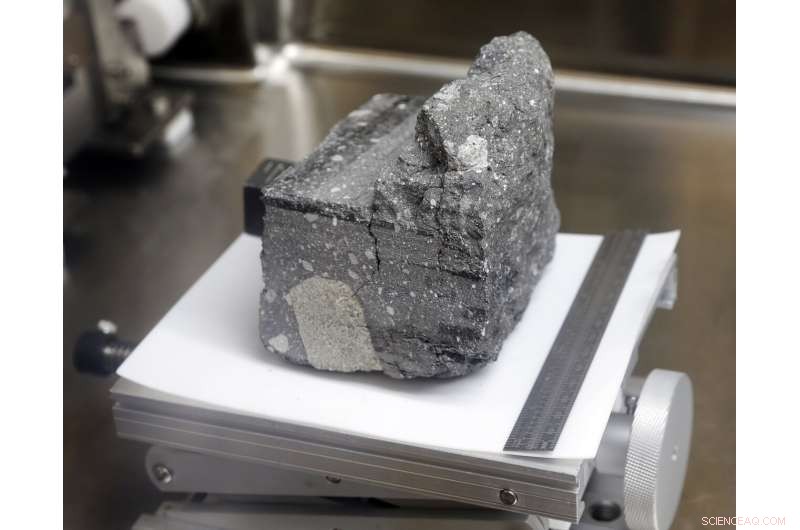
A regolith breccia rock of sintered lunar soil, dating 3.2 billion years old and collected by Apollo 15, is displayed in a pressurized nitrogen-filled case inside the lunar lab at the NASA Johnson Space Center Monday, June 17, 2019, in Houston. (AP Photo/Michael Wyke)
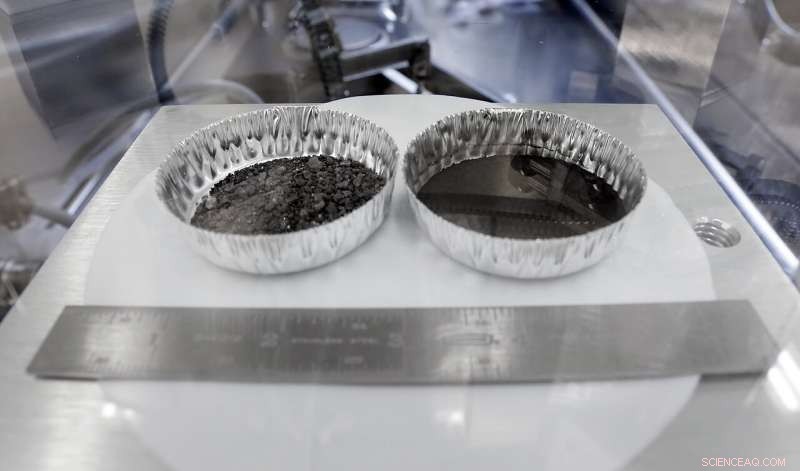
Two separate 2 inch foil pans hold lunar dirt, from the last shovel full collected by Neil Armstrong on the Apollo 11, in the lunar lab at the NASA Johnson Space Center Monday, June 17, 2019, in Houston. (AP Photo/Michael Wyke)

Ryan Zeigler, Apollo sample curator, vänster, stands next to a nitrogen-filled case displaying various lunar samples collected during Apollo missions 15, 16 and 17, inside the lunar lab at the NASA Johnson Space Center Monday, June 17, 2019, in Houston. (AP Photo/Michael Wyke)
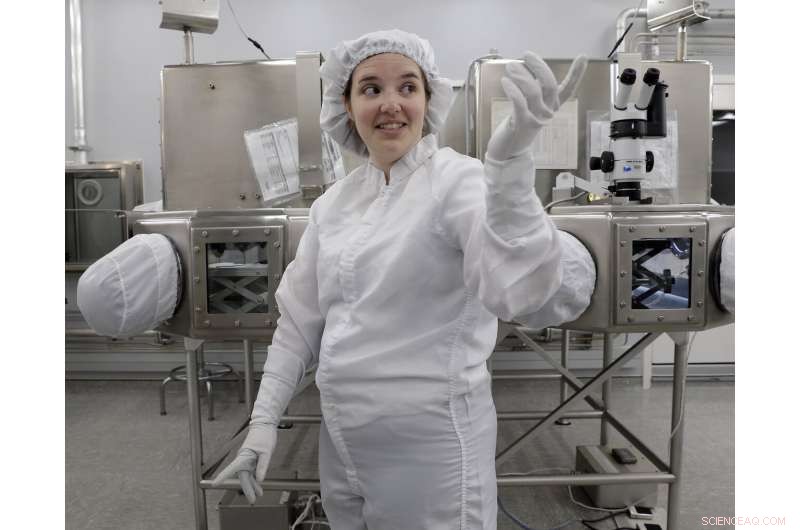
Lacey Costello, Apollo sample curation processor, talks about her job examining lunar samples inside the lunar lab at the NASA Johnson Space Center Monday, June 17, 2019, in Houston. (AP Photo/Michael Wyke)
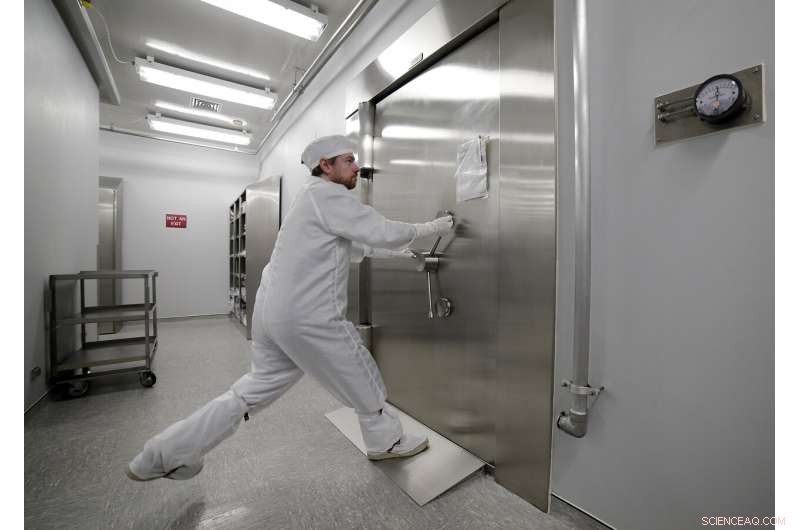
Jeremy Kent, Apollo sample curation processor, tugs to open the 1978 U.S. federal bank vault that protects the entrance to the lunar sample vault inside the lunar lab at the NASA Johnson Space Center Monday, June 17, 2019, in Houston. The door requires two separate combinations, held by two separate people, to open. (AP Photo/Michael Wyke)
Of the six manned moon landings, Apollo 11 yielded the fewest lunar samples:48 pounds or 22 kilograms. It was the first landing by astronauts and NASA wanted to minimize their on-the-moon time and risk. What's left from this mission—about three-quarters after scientific study, public displays and goodwill gifts to all countries and U.S. states in 1969—is kept mostly here at room temperature.
Armstrong was the primary rock collector and photographer. Aldrin gathered two core samples just beneath the surface during the 2 1/2-hour moonwalk. All five subsequent Apollo moon landings had longer stays. The last three—Apollo 15, 16 and 17—had rovers that significantly upped the sample collection and coverage area.
"Fifty years later, we're still learning new things ... incredible, " said the lab's Charis Krysher, holding a clear acrylic marble embedded with chips of Apollo 11 moon rock in her gloved hand.
By studying the Apollo moon rocks, Zeigler said, scientists have determined the ages of the surfaces of Mars and Mercury, and established that Jupiter and the solar system's other big outer planets likely formed closer to the sun and later migrated outward.
"So sample return from outer space is really powerful about learning about the whole solar system, " han sa.
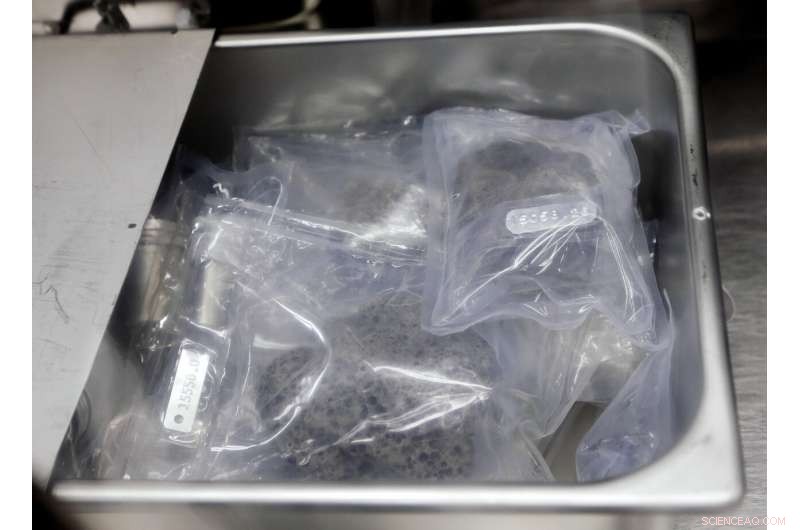
A stainless steel bin is opened to show individually tagged and sealed lunar samples collected during Apollo 16 inside a pressurized nitrogen-filled case holding the samples from that mission in the lunar lab of the NASA Johnson Space Center Monday, June 17, 2019, in Houston. (AP Photo/Michael Wyke)
Andrea Mosie, who's worked with the Apollo moon rocks for 44 years and was a high school intern at Johnson Space Center in July 1969, remembers the Polaroid photos and handwritten notes once accompanying each sample. She sometimes gets emotional when talking to children about the moonshots and does her best to dispel any notion that the rocks aren't from the moon and the lunar landings never happened.
"The samples are right here and they're still in a pristine state, " she assures young skeptics.
Most of the samples to be doled out over the next year were collected in 1972 during Apollo 17, the final moonshot and the only one to include a geologist, Harrison Schmitt. He occasionally visits the lunar sample lab and plans to help open the fresh specimens.
The nine U.S. research teams selected by NASA will receive varying amounts.
"Everything from the weight of a paperclip, down to basically so little mass you can barely measure it, " Zeigler said.
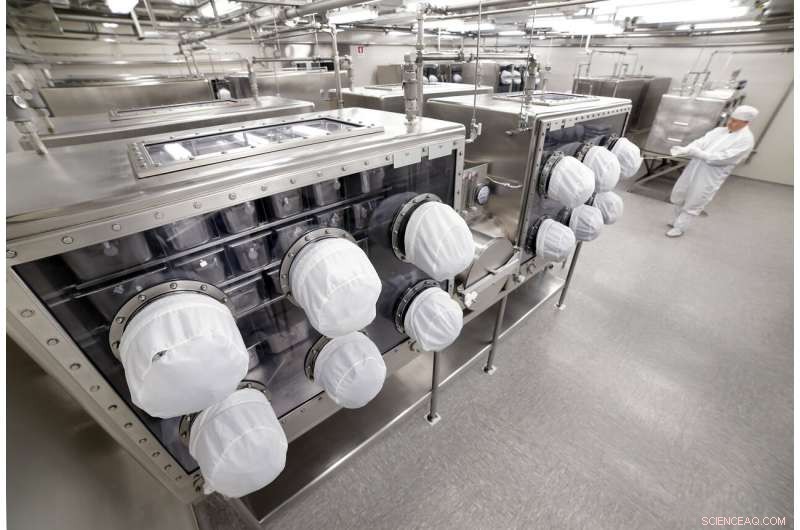
Pressurized nitrogen-filled cases hold lunar samples collected from Apollo 11, vänster, and Apollo 12, höger, with NASA's Apollo sample curator Ryan Zeigler in the background, inside the lunar sample vault in the lunar lab at the NASA Johnson Space Center Monday, June 17, 2019, in Houston. The restricted lab is home to hundreds of pounds of moon rocks collected by Apollo astronauts close to a half-century ago. (AP Photo/Michael Wyke)
Especially tricky will be extracting the gases that were trapped in the vacuum-sealed sample tubes. The lab hasn't opened one since the 1970s.
"If you goof that part up, the gas is gone. You only get one shot, " Zeigler said.
The lab's collection is divided by mission, with each lunar landing getting its own cabinet with built-in gloves and stacks of stainless steel bins filled with pieces of the moon. Apollo 16 and 17, responsible for half the lunar haul, get two cabinets apiece.
The total Apollo inventory now exceeds 100, 000 samples; some of the original 2, 200 were broken into smaller pieces for study.
Sample processor Jeremy Kent is hopeful that "we will get some more samples here in the lab to work on."
There's space for plenty more.
© 2019 Associated Press. Alla rättigheter förbehållna.